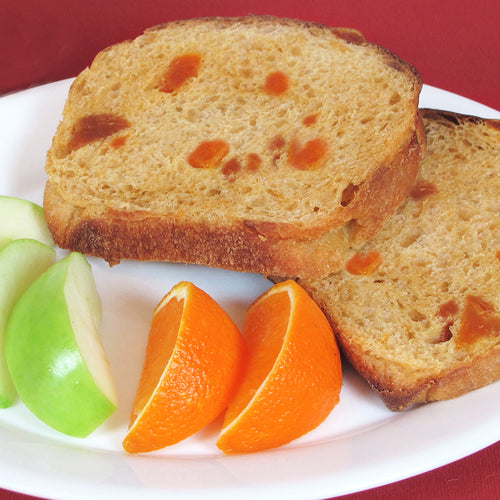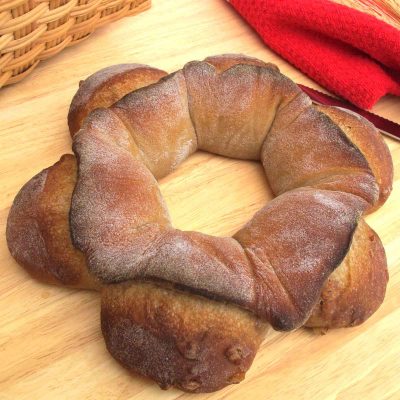
How to Bake With Sprouted Wheat Flour
One of our goals this year is to bake with healthier flours. Happily, this carries none of the self-deprivation, lackluster flavor or increased effort that often accompany other dietary reforms, because sprouted whole wheat flour tastes better than standard whole wheat and is easier and faster to work with..
Sprouted Whole Wheat Flour is Super Healthy
This flour is made from wheat kernels that have been allowed to sprout, beginning the process of a seed growing into a plant. After sprouting, the kernels are dried and ground into a lovely, soft whole grain flour, which is often organic. Why is sprouting desirable? Sprouting releases vitamins, activates enzymes and makes grains more digestible, particularly for those with mild wheat sensitivities.
The sprouting process reduces phytic acid, a naturally-occurring component of the bran and outer layers of many grains. Phytic acid is problematic because it prevents phosphorous and minerals like calcium, magnesium, zinc and iron from being absorbed. Sprouting is a way to increase the bio-availability of whole wheat’s nutrition, and to reduce the amount of minerals used by the body to process whole grains
Sprouted Wheat Flour is Super Delicious
An added benefit of sprouted flour’s enhanced enzyme activity is better flavor. Enzymes facilitate the breakdown of some of wheat’s complex carbs into simpler, sweeter sugars. As a result, the flour tastes sweet and mild, with none of the bitterness of traditional whole wheat. It’s the perfect choice for our healthy remake of classic Brioche, below.
Sprouted whole wheat flour is available in the U.S. from Arrowhead Mills and King Arthur Flour.

General Tips for Baking Bread with Sprouted Wheat Flour
1. Skip the pre-ferment. Because sprouted wheat flour has rich enzyme content and sweet flavor, no pre-ferment or lengthy autolyse is necessary. Eliminating these steps simplifies bread making and helps avoid a gummy texture that can sometimes result from too much enzyme activity.
2. Avoid lengthy fermentation. This is partly due to the need to avoid too much enzyme activity, and also because of the delicate nature of the gluten structure in whole wheat. We have had good luck rising sprouted wheat flour breads to 1.75x to 2x volume, being careful not to allow the dough to go past that. Similarly, the final shaped proof often goes quickly. We start checking the bread after 60 minutes at 85F/ 29C.
3. Add enough water. Whole grain flours are thirsty, and often benefit from a soft, slightly sticky dough consistency. This helps ensure adequate hydration of the grain and also promotes a moist, light texture.
4. Knead a few extra minutes. Bran particles in whole wheat flours interfere with gluten bonding, so additional kneading/folding and incorporating some strong white flour can help boost structure.
6. Use a warm rise. Long, cold ferments may allow enzymes to degrade the structure or create a gummy texture. We like to use a warm rise of about 85F/ 29C.
Sprouted Wheat Flour Recipes:




















Leave a comment
2 comments
These are great tips – I have read though, that even though sprouted flours are so very helpful, using them in a properly fermented sourdough bread is still preferred. So much confusing information out there! I would like to make a sourdough bread with a starter, sprouted whole grain flour and whole grain flour – do you have any tips for that? I was thinking perhaps a pre-ferment with the non-sprouted flours, but then I get stuck.
Thank you for your feedback and question. King Arthur Flour says “You can substitute King Arthur Sprouted Wheat Flour 1:1 for whole wheat flour or up to 50% for all-purpose in your favorite recipes.” For a start we recommend you search for a recipe of interest on The Fresh Loaf website: http://www.thefreshloaf.com There are an abundance of sourdough whole grain flour and sprouted whole grain flour recipes to choose from. Be sure to read the comments following each recipe for hints about the particular method you are following. All the best to you in baking!